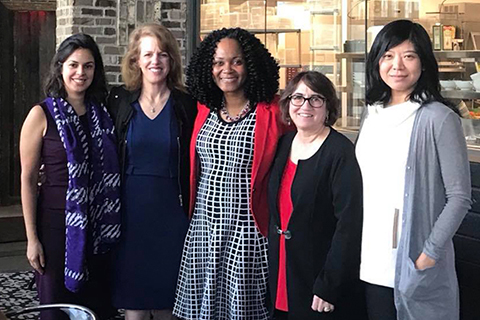Women in STEM: How Can Universities Close Gender Gaps?

Colleges and universities that invest in gender parity ultimately help support women pursuing careers in the fields of science, technology, engineering, and math (STEM), according to a new book co-authored by Northwestern University’s Lois Trautvetter.
Trautvetter, director of the Master’s in Higher Education Administration and Policy program, contributed a chapter that explores how a handful of four-year schools have successfully recruited and retained women in engineering. Since underrepresentation in STEM fields varies by discipline, researchers should address differences in their data collection, analyses, and interpretation, she wrote.
Her research suggests that outreach, bridge, and support initiatives attract women to undergraduate engineering programs, but the responsibility for these efforts disproportionately falls on the backs of only a few female and minority faculty. Colleges face specific challenges in hiring and retaining faculty and staff who promote the success of women in STEM and future research needs to address the lack of data in the field.
The book Advancing Higher Education Research on Undergraduate Women in STEM was a special issue published in the journal New Directions for Institutional Research. It was co-edited by Lara Perez-Felkner, assistant professor at Florida State University, and Joy Gaston Gayles, professor at North Carolina State University.
The project was inspired by a small group of women invited to participate in the American Association of University Women conference on women in engineering and computer science in 2015, Trautvetter said. “That was the spark that started our collaboration; but more importantly, we also become friends.”
This volume, written to broaden opportunities for STEM undergraduates, serves as a tool for higher education researchers on issues of expertise within a discipline, intersectionality, and theory and methodology related to women in STEM.
Trautvetter, a professor in the School of Education and Social Policy with a chemistry and chemical engineering background, has researched engineering education for at least a decade through a National Science Foundation-sponsored grant titled "Prototyping the Engineer for 2020."
In addition to examining how schools can produce engineering graduates with design, problem solving, and interdisciplinary skills, she has extensively studied how to increase the numbers of women and historically underrepresented minority students and faculty in the field.
The STEM workforce isn’t keeping pace with the changing demographics of the American population, despite more than three decades of increased national recruitment efforts. In 2015–2016, female students still made up less than 20 percent of undergraduate engineering students.
Trautvetter’s qualitative research suggests that schools that have successfully recruited female students showed a historical commitment and mission to increase women in engineering. They employed strategic admissions policies and involved administrators high up the organizational chart – in some cases including presidents. They also developed strong outreach programs within the K-12 sector and implemented summer bridge and orientation programs.
To retain these women, schools created a positive campus climate and offered support services during early undergraduate years, according to Trautvetter’s data. Students also needed strong ties with faculty and out of the classroom, high support for their organizations and activities, and welcoming communities for learning and living.
“Such phenomena and experiences matter; they influence learning outcomes of all students and not just female students,” Trautvetter wrote. “Institutions appeared to be most successful when they capitalized on the existing diversity of the peer environment and the facilities and resources within their campuses.”
Still, researchers lack data on whether these experiences influenced whether participants end up being recruited for a STEM degree and career, Trautvetter said. Most of the existing data is anecdotal and personal to each institution.
Moreover, schools that collect data typically do so to bolster their pitches to prospective students, parents, instructors, and donors, Trautvetter said. It’s not always used to study or test how effective the various approaches to the larger problem of producing more engineers, and in general, more STEM graduates feeding into the STEM workforce.
“This is a call to institutional researchers to collaborate and study with colleagues on their campuses and their counterparts at other institutions,” Trautvetter said. “There is a need for a more in-depth understanding from scholars, practitioners and institutional research communities in order to address and eliminate gender disparities in STEM.”